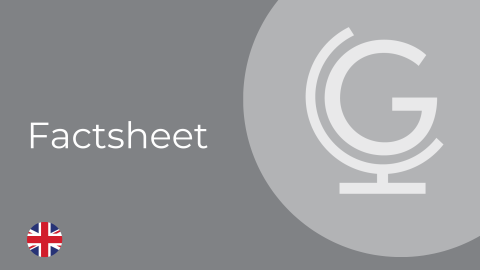Sustainable Energy - December Commentary

This is a marketing communication. Please refer to the prospectus, supplement and KID/KIID for the Funds before making any final investment decisions. The value of this investment can fall as well as rise as a result of market and currency fluctuations. You may not get back the amount you invested.
Past performance does not predict future returns.
COP30 and the energy transition
This month, we review some of the key outcomes of COP30 and the implications for the energy transition. While the long-held goal of limiting global temperature increases to 1.5°C was reaffirmed, updated nationally determined contributions (NDCs) still imply warming well in excess of 2°C. We assess the conclusions of COP30 and discuss the changes that would be required across the sustainable energy subsectors to deliver a net zero transition.
COP30 concluded on 21st November, marking the tenth anniversary of the Paris Agreement and the adoption of global efforts to limit warming to 1.5°C. As part of the Paris Agreement’s five year “ambition-raising” cycle, COP30 also required members to submit their updated NDCs, with mitigation targets and measures to 2035.
While this year’s summit delivered incremental progress in key areas such as adaptation financing and developing emerging frameworks to support a just transition, it ultimately fell short in delivering the material step up in ambition needed to realign global emissions with a 1.5°C scenario. In our view, the absence of a concrete commitment to phase out fossil fuels means that COP30 will ultimately be viewed as a missed opportunity to build on the achievements of previous climate conferences.
However, from the perspective of investing in the energy transition, we found the following developments to be particularly interesting.
Progress on Climate Financing
Climate finance had a lesser role on the COP30 agenda than in previous years, but the summit delivered a handful of noteworthy developments. Chief among these was a commitment to “at least triple adaptation finance by 2035”, signalling a growing recognition that resilience investment must scale significantly as climate impacts intensify. Delegates also reaffirmed the New Collective Quantified Goal (NCQG) to channel $300 billion per year in climate finance to developing economies, alongside the release of a report outlining a strategy to mobilise the $1.3 trillion referenced in the “Baku to Belém Roadmap to $1.3T” framework in COP29.
Renewed commitment to renewables and efficiency
Building on the commitments made at COP28, a coalition of more than 80 countries including the EU and its member states renewed their pledge to transition away from unabated fossil fuels, triple renewable capacity and double energy efficiency by 2030. This reaffirmation of one of COP28’s central outcomes points to the growing recognition of the importance of not only accelerating clean energy deployment but also driving substantial efficiency gains in buildings, industry and transport.
Within the area of efficiency, there was also explicit action taken with the release of Mission Efficiency’s detailed implementation plan. Mission Efficiency is a global coalition backed by governments, international organisations and industry partners with the mandate to support delivery of the COP28 goal to double global energy-efficiency improvements by 2030. Its COP30 plan sets out concrete policy, technology and financing measures to accelerate efficiency gains across the built environment, industry and transport.
As well as the headline announcements, other commitments included the following:
- Transition investment: Members of the Utilities for Net Zero Alliance, a coalition of major power and grid companies, announced commitments to increase transition investment by 25% to $150bn per year, split as $66bn in renewables and $82bn in grids. The updated investment plan means the members of the Alliance will mobilise more than $1 trillion in energy transition investments by 2030.
- Sustainable Fuel: commitment to quadruple the production and use of sustainable fuels by 2035, endorsed by a group of 23 countries including Brazil, Italy, Canada and Japan.
Recognition of the need to work outside the COP timelines
Another interesting development from COP30 was a willingness among countries, and indeed the presidency itself, to create transition plans and roadmaps outside the formal COP negotiation process. Brazil’s commitment to develop voluntary frameworks on fossil-fuel transition and deforestation underscores a pragmatic move towards implementation, even when consensus cannot be reached within the usual negotiating channels. While non-binding, these parallel initiatives can still play a role in advancing clean-energy strategies and accelerating planning cycles.
Implied warming from NDCs, pledges and targets
To contextualise the outcomes of COP30 and the wider energy transition, we summarise some of the key findings from the UN’s latest Emissions Gap Report. While the report acknowledges the significant progress made since the adoption of the Paris Agreement, its analysis finds that the emissions gap – the difference between estimated greenhouse gas emissions implied by the latest NDCs and the level of emissions consistent with the 1.5°C target of the Paris Agreement – remains stubbornly high.
According to the UN:
- Updated NDCs still leave the world on a 2.3-2.5°C warming path: even if all announced unconditional NDCs are fully implemented, estimated global warming will reach 2.3-2.5°C, well above the 1.5°C target of the Paris Agreement.
- Under existing policies, warming could approach 2.8°C: existing policies imply a warming trajectory closer to 2.8°C, assuming no further tightening. Even then, many countries are not on track to deliver their 2030 pledges, meaning that temperature rises could exceed 2.8°C.
- The updated NDCs have had a marginal impact: The modest improvement from last year’s 2.6-2.8 °C (NDC scenario) to 2.3-2.5 °C mostly reflects methodological updates; the underlying ambition increase in new pledges is limited and will potentially be offset by the departure of the US in 2026.
Implications of a net zero scenario
The UN’s Emissions Gap Report points to many of the same conclusions as our base-case energy transition scenario. As we understand it, the industry’s current capacity and plans to provide decarbonisation solutions have accelerated meaningfully in the last decade but still fall short of the level required to meet the goals of the Paris Agreement. We highlight the following changes across our subsectors that would be required to deliver a net zero transition:
- Within efficiency, the IEA estimate that annual energy intensity improvements must quadruple from c.1% in 2024 and average 4% per year throughout the rest of the decade. For buildings, this means that efficiency investments grow from $240bn today to reach $600bn per year to 2035. For transport and industry, average energy efficiency investment must nearly double, reaching c.$160bn and c.$70bn per year. It is worth noting that our base case scenario already assumes significant energy efficiency gains with world energy demand forecast to grow at 1% per year, half the historic rate of 2% per year.
- Alternative fuel production growth would need to more than double by 2030 from 2023 levels (implying 11% per year growth) and then double again by 2050. Sustainable aviation fuel (SAF) would have to grow from 0.3% of global jet fuel in 2024 to around 10% in 2030 (substantially higher than our base case 2030 estimate of around 2%), before reaching 20% in 2050.
- For electric vehicles and batteries, BNEF estimate that in a net zero scenario, global EV penetration rates must hit 68% by 2030 with 100% of vehicles sold being electric by 2040 (versus their current ‘base case’ economic transition estimates of 42% and 70% respectively). This translates into global battery demand of 11.6 TWh in 2050 compared to 1.2 TWh in 2024, almost 50% higher than their base case assumptions.

Source: BNEF, Guinness Global Investors, December 2025
- Solar and wind installed capacity would need to triple 2022 levels by 2030. In doing so, renewable generation would see its share of total generation increase from 32% to 75% by 2035. While investment levels in solar are almost in line with a 1.5°C scenario, IRENA estimate that investment levels in onshore and offshore wind need to be scaled up by three times and eight times respectively.
- For power grids, IRENA estimate that net zero would require annual investment to almost double by 2030, reaching c.$620bn per year. As it stands, only 16% of grid investment in 2024 was directed towards new connections, with the majority going towards replacing ageing assets (44%) and reinforcing the existing grid (40%). At the same time, investment into battery storage needs to more than triple by the end of the decade, growing from c.$50bn in 2024 to $170bn per year in 2030.
- Under a net zero scenario, installed nuclear power capacity needs to grow 70% by 2035, adding 290GW of new generation. By 2050, capacity needs to more than double. New installations must also outpace a wall of retirements from power plants installed in in the 1970s and 1980s which are approaching the end of their useful life. Current industry ambitions to triple nuclear capacity by 2050 would see global capacity reach 1,240GW, around 160GW higher than the IEA’s net zero capacity target and would require an additional $900bn of investment.
- According to the IEA, energy investment in the net zero scenario would need to increase from about $3.3trn to $5.6trn by 2035. Overall investment in the power sector would need to almost double by 2035, reaching $2.5trn, with the bulk of that investment ($1.3trn) going toward renewable generation.
Conclusion
Investment in the energy transition continues to accelerate, even if current spending remains short of what is required for a net zero pathway. COP30, together with this analysis, offers a timely reminder of the scale of capital still needed to realign global emissions with long-term climate goals. Encouragingly, with investment continuing to grow, the backdrop for sustainable energy investing remains constructive.
The value of this investment can fall as well as rise as a result of market and currency fluctuations. You may not get back the amount you invested.
To read the full report, click the link below.
The information provided on this page is for informational purposes only. While we believe it to be reliable, it may be inaccurate or incomplete. Any opinions stated are honestly held at the time of publication, but are not guaranteed and should therefore not be relied upon. This content should not be relied upon as financial advice or a recommendation to invest in the Funds or to buy or sell individual securities, nor does it constitute an offer for sale. Full details on Ongoing Charges Figures (OCFs) for all share classes are available here.
The Guinness Sustainable Energy Funds invest in companies involved in the generation, storage, efficiency and consumption of sustainable energy sources (such as solar, wind, hydro, geothermal, biofuels and biomass). We believe that over the next twenty years the sustainable energy sector will benefit from the combined effects of strong demand growth, improving economics and both public and private support and that this will provide attractive equity investment opportunities. The Funds are actively managed and use the MSCI World Index as a comparator benchmark only.
For the avoidance of doubt, if you decide to invest, you will be buying units/shares in the Fund and will not be investing directly in the underlying assets of the Fund
Guinness Sustainable Energy Fund
Documentation
The documentation needed to make an investment, including the Prospectus, the Key Investor Information Document (KIID), Key Information Document (KID) and the Application Form, is available in English from www.guinnessgi.com or free of charge from the Manager: Waystone Management Company (IE) Limited, 2nd Floor 35 Shelbourne Road, Ballsbridge, Dublin DO4 A4E0, Ireland; or the Promoter and Investment Manager: Guinness Asset Management Ltd, 18 Smith Square, London SW1P 3HZ.
Waystone IE is a company incorporated under the laws of Ireland having its registered office at 35 Shelbourne Rd, Ballsbridge, Dublin, D04 A4E0 Ireland, which is authorised by the Central Bank of Ireland, has appointed Guinness Asset Management Ltd as Investment Manager to this fund, and as Manager has the right to terminate the arrangements made for the marketing of funds in accordance with the UCITS Directive.
Investor Rights
A summary of investor rights in English, including collective redress mechanisms, is available here: https://www.waystone.com/waystone-policies/
Residency
In countries where the Funds are not registered for sale or in any other circumstances where their distribution is not authorised or is unlawful, the Funds should not be distributed to resident Retail Clients. NOTE: THIS INVESTMENT IS NOT FOR SALE TO U.S. PERSONS.
Structure & Regulation
The Funds are sub-funds of Guinness Asset Management Funds PLC, an open-ended umbrella-type investment company, incorporated in Ireland and authorised and supervised by the Central Bank of Ireland, which operates under EU legislation. The Funds have been approved by the Financial Conduct Authority for sale in the UK. If you are in any doubt about the suitability of investing in these Funds, please consult your investment or other professional adviser.
Switzerland
This is an advertising document. The prospectus and KID for Switzerland, the articles of association, and the annual and semi-annual reports can be obtained free of charge from the representative in Switzerland, Reyl & Cie SA, Ru du Rhône 4, 1204 Geneva. The paying agent is Banque Cantonale de Genève, 17 Quai de l'Ile, 1204 Geneva.
WS Guinness Sustainable Energy Fund
Documentation
The documentation needed to make an investment, including the Prospectus, the Key Investor Information Document (KIID) and the Application Form, is available in English from www.waystone.com/our-funds/waystone-fund-services-uk-limited/ or free of charge from Waystone Management (UK) Limited, PO Box 389, Darlington DL1 9UF.
General enquiries: 0345 922 0044
E-Mail: wtas-investorservices@waystone.com
Waystone Management (UK) Limited is authorised and regulated by the Financial Conduct Authority.
Residency
In countries where the Fund is not registered for sale or in any other circumstances where its distribution is not authorised or is unlawful, the Fund should not be distributed to resident Retail Clients.
Structure & regulation
The Fund is a sub-fund of WS Guinness Investment Funds, an investment company with variable capital incorporated with limited liability and registered by the Financial Conduct Authority.
This Fund is registered for distribution to the public in the UK but not in any other jurisdiction. In other countries or in circumstances where its distribution is not authorised or is unlawful, the Fund should not be distributed to resident Retail Clients.
Guinness Sustainable Energy UCITS ETF
Documentation
The documentation needed to make an investment, including the Prospectus, the Key Investor Information Document (KIID), Key Information Document (KID) and the Application Form, is available in English from www.guinnessgi.com, www.hanetf.com or free of charge from the Administrator: J.P Morgan Administration Services (Ireland) Limited, 200 Capital Dock, 79 Sir John Rogerson’s Quay, Dublin 2 DO2 F985; or the Investment Manager: Guinness Asset Management Ltd, 18 Smith Square, London SW1P 3HZ.
Residency
In countries where the Fund is not registered for sale or in any other circumstances where its distribution is not authorised or is unlawful, the Fund should not be distributed to resident Retail Clients. NOTE: THIS INVESTMENT IS NOT FOR SALE TO U.S. PERSONS.
Structure & regulation
The Fund is a sub-fund of HANetf ICAV, an Irish collective asset management vehicle umbrella fund with segregated liability between sub-funds which is registered in Ireland by the Central Bank of and authorised under the UCITS Regulations.




